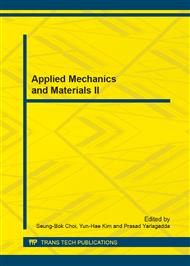p.265
p.271
p.277
p.281
p.285
p.295
p.299
p.303
p.307
A Numerical Investigation on Hydrodynamics of Multiple Floating Bodies in Offshore Installation Engineering
Abstract:
There are many applications in marine engineering where two or more floating vessels are in close proximity. Probably the most significant one is related to the offshore installation engineering. On the background of the upper module installation operation of spar platform, this paper investigates the hydrodynamic interaction effects of multiple floating bodies in offshore installation engineering. The numerical simulation bases on the 3-D frequency domain linear potential theory. The calculations are carried out for the crane ship, the transport ship and the spar platform. Finally the best environmental parameters and the relative position of floating bodies are selected, which can provide good advice on installation operation scheme design.
Info:
Periodical:
Pages:
285-291
Citation:
Online since:
December 2013
Authors:
Price:
Сopyright:
© 2014 Trans Tech Publications Ltd. All Rights Reserved
Share:
Citation:


